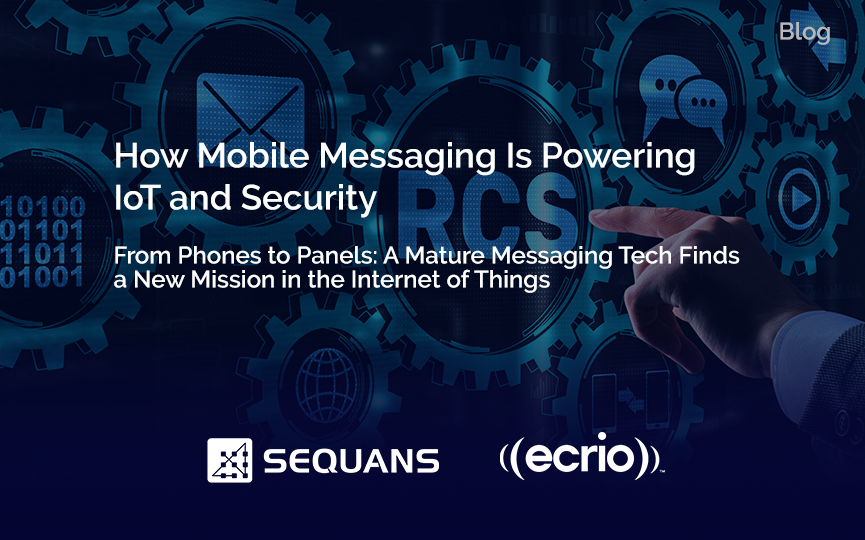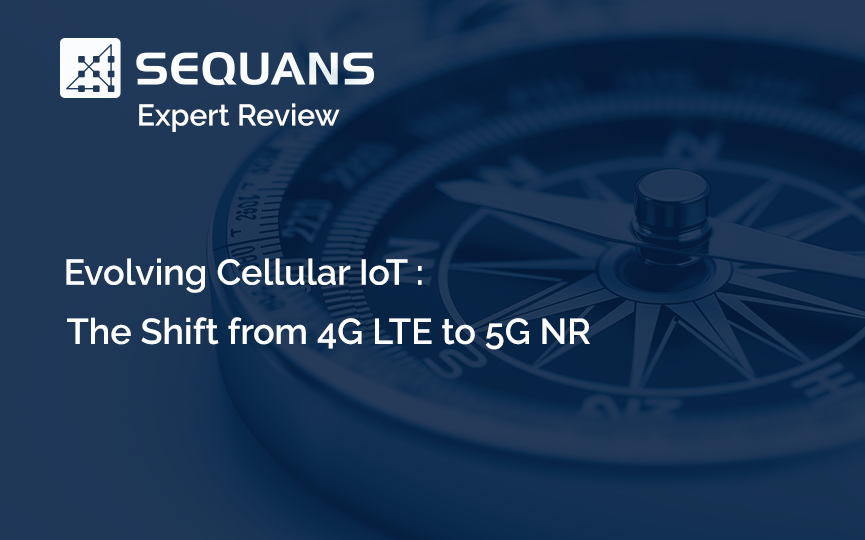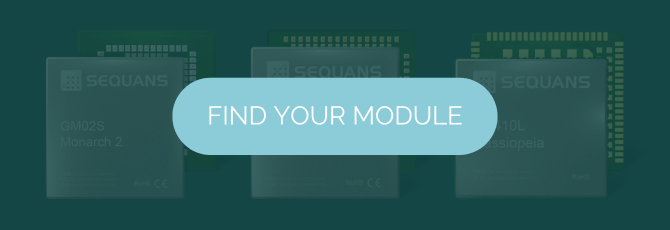Anyone who owns a smartphone knows that it runs on a cellular network, but did you know that there are billions of non-smartphone devices also running on the cellular network? Non-smartphone objects are things we depend on in daily life that are connected to the internet and designed to give us information to make our lives easier in many ways— things like fitness wearables, smart home appliances such as smoke detectors and thermostats, smart city devices such as streetlights and parking meters, asset trackers, agricultural and industrial monitors, vending machines, alarm systems, video doorbells, dog trackers, utility meters, pallet trackers, smart locks, and on and on. This is what is known as the Internet of Things, or IoT. There is a vast world of connected things, and cellular IoT refers to all those things connected to the IoT via the cellular network. The cellular IoT is growing by leaps and bounds because cellular has proven to be the best connectivity technology for these things—for many reasons, but mainly because we now expect our IoT objects to connect instantly and to be always on, requiring no intervention from us.
Initially, the IoT relied on short range communication technologies such as Bluetooth or Wi-Fi. As a result, the initial applications were smart home devices or wearables where the object was connected to the Internet via an intermediate device acting as a local relay. In the case of smart home applications, for example, the home gateway is the relay; in the case of wearables, the user’s smartphone acts as the relay. Because of this history, IoT in the consumer’s mind often meant objects were connected only locally and temporarily. With the rise of wide area cellular connectivity, however, it became possible to connect objects to the IoT without the need of a local relay or intermediate network, thereby greatly expanding the reach and the immediacy of the services provided by these objects. Seeing the benefits of this immediacy and the cellular network’s global reach, operators began to use their 2G networks to make machine-to-machine connections. This became known as “machine type communications” or MTC, and that’s when we first heard the phrase Internet of Things.
With each new cellular generation, 3G, 4G and now 5G, along with the convergence of multiple additional technologies, including AI, machine learning, and big data, IoT has taken on a whole new meaning. It now encompasses every kind of device imaginable, from the tiniest sensor or consumer gadget to the largest industrial machine or aircraft.
Cellular IoT Enables an Instant and Global Connection
The craving of consumers for instant connection is what’s powering the next wave of innovation in the IoT and, although the concept has been around for about 20 years now, it is really starting to take off as technology has evolved to make connecting almost any object you can think of easy and affordable. Ericsson reports that the number of objects or devices connected to the cellular IoT is growing by about 19 percent per year, leading to an estimated 20 billion IoT devices connected in just the next couple of years, of which more than 3.5 billion will be connected by cellular.
As mentioned, IoT devices can be connected to the internet by a variety of technologies, such as Wi-Fi or Bluetooth, or a proprietary local network such as LoRa, but cellular is the only technology that can provide ubiquitous coverage and meet our demand for immediate, uninterrupted, and always on connectivity. Cellular is the most reliable and secure connection available, and it works everywhere the same—all over the entire globe. Cellular IoT therefore enables our own smart objects to just turn on and work anytime and anywhere without us having to set up networks or do anything else. This is the beauty and simplicity of the always on and everywhere available cellular IoT.
LTE-M and NB-IoT Make Cellular IoT Low Power and Affordable
In the early days of IoT, cellular technology was deemed too expensive and too power hungry to be suitable for the many IoT devices that need to run on batteries. But the cellular industry evolved to address this and the industry’s standards body, the 3GPP, defined two narrowband technology options for low power, low data rate service to cost-effectively support connectivity for IoT objects. These two low-power, low data rate technologies are LTE-M and NB-IoT. LTE-M is designed to support applications with an average throughput speed not above 100 kilobits per second, while NB-IoT (narrowband IoT) is designed to deliver throughput of just tens of kilobits per second. NB-IoT was at first adopted by China to connect IoT objects, while North America and Europe began with LTE-M. With the introduction of these two narrowband, low power technologies, the cellular IoT was born.
LTE Cat 1 Complements LTE-M and NB-IoT for Massive IoT Applications
The two cellular low-power categories LTE-M and NB-IoT have been designed to address the large majority of what is now known as massive IoT applications (because millions of objects can be connected) where only very low data rate is required. However, as the concept of what the IoT is has expanded, it became clear that certain IoT applications require a data rate higher than LTE-M. These include applications that need to support high quality voice and/or low latency. For these types of applications, LTE Cat 1, providing up to 10 megabits/second of throughput, became recognized as a powerful IoT solution. It is found to be ideal for devices such as health and fitness wearables or audio-streaming hearables, with or without voice support, security cameras, and some high-end meters and data aggregators. While LTE Cat 1 existed prior to the introduction of LTE-M and NB-IoT, the new demand to use it for IoT began a new wave of development to use it for these newer types of IoT applications, LTE Cat 1 has now been re-defined with the introduction of the LTE Cat 1bis variant (using only one antenna instead of two) and it is now optimized for IoT, bringing it nearly equivalent to LTE-M in terms of cost-effectiveness and low power consumption. It is important to note that any Cat 1 network can enable Cat 1bis devices without any network change or upgrade.
Cellular IoT Supports Broadband Applications Too
In addition to low power/low data-rate massive IoT technologies, the cellular industry can also offer higher throughput capabilities for IoT applications. These include LTE Cat 4, providing up to 150 megabits/second, and LTE Cat 6, providing up to 300 megabits/second. These higher data rate technologies represent the low-end of the 4G cellular broadband throughput categories, but they are ideal for the support of IoT applications where broadband speed is required but low-cost remains an important factor. LTE Cat 4 and 6 can serve a wide range of broadband applications where super high-rate LTE Cat 12 and 18, for example, are cost-prohibitive and overkill for IoT. IoT applications for LTE Cat 4 and 6 include home routers, enterprise routers, gateways, industrial modems, portable routers, ruggedized tablets, cameras and more. In one key example we see LTE Cat 4 and 6 modules have been introduced to support new CBRS, that has been allocated to enable public entities like school districts to connect their students to the IoT and conduct distance learning. This is a perfect example of cellular IoT technology providing broadband IoT connectivity for distance learning for large numbers of students and teachers, very cost-effectively.
5G Extends Cellular IoT to Faster and Lower Latency Use Cases
5G is the next generation of wireless technology and just like all the previous generations, it is way faster and more powerful than its predecessors. 5G is expected to transform the IoT landscape even though it will operate in parallel with 4G LTE for a long, long time. In fact, LTE-M and NB-IoT will continue to evolve with software upgrades and will be part of the global 5G network. Think about the IoT on steroids and you’ll see 5G supporting millions of devices in manufacturing or other industrial settings operating at about ten times the speed of 4G. The number and types of use cases expand with 5G and include warehouse maintenance and workforce management, remote monitoring of traffic, self-guided vehicles, environmental monitoring on a very wide scale, supply chain monitoring, robotics and AI. For a full explanation of what to expect in 5G IoT and how it differs from 4G, see this article by Guillaume Vivier, CTO, Sequans Communications:
Cellular IoT: How 5G Differs from 4G
Sequans is 100 percent Focused on Cellular IoT
Sequans is one of the world’s leading providers of connectivity solutions for the cellular IoT, and the only company optimized entirely for IoT with a comprehensive product portfolio of solutions for a very wide range of connected objects, from low data rate NB-IoT and LTE-M, to Cat 1 and Cat 1bis, all the way up to high end LTE Cat 6 and 5G NR with speed up to 7 gigabits/second. Our years of experience in cellular IoT makes us uniquely able to help our customers through the various deployment challenges of cellular, including carrier certification, roaming and data plan selection, RF antenna design, constantly evolving standards, country and regional dependencies, and more.
Our product families include Monarch for LTE-M and NB-IoT, Monarch N for NB-IoT only, Calliope for LTE Cat 1 and Cat 1bis, Cassiopeia for LTE Cat 4/6 and the coming Taurus 5G that will appear on the scene in 2023. Sequans was first to market with cellular IoT connectivity solutions, and while competitors are still on their first generations, Sequans has already introduced second generation Monarch (LTE-M/NB-IoT) and Calliope (LTE Cat 1/Cat 1bis) technologies and is today at the leading edge of cellular IoT solutions development.
There is a huge ecosystem surrounding cellular IoT. And it is made up of the world’s leading operators along with the industry’s leading engineers, thinkers, and inventors who have made sure that cellular meets every possible need of IoT devices of every kind. No other wireless technology has so much expertise and investment behind it. Cellular technology is feature-rich with powerful capabilities such as ultra-low power consumption, integrated SIM (subscriber identity module) — technology that makes it possible to deploy devices anywhere without having to change SIM cards. Cellular also has other key capabilities needed for IoT, including highly accurate positioning technology, and security at the highest level.
Cellular IoT is our reason for being and we are the only IoT connectivity company with a comprehensive set of solutions addressing every IoT segment. We are entirely focused on IoT and, beyond our proven and mature products and software systems that lead the industry in capability, we bring many years of experience working with cellular operators all over the world. Although cellular network technology can seem complex, we know how to simplify it because we are completely familiar with its every aspect and have all tools required to ease the development. Working with Sequans, the leader in cellular IoT, you will have your IoT project up and running in less time than you ever thought possible.






